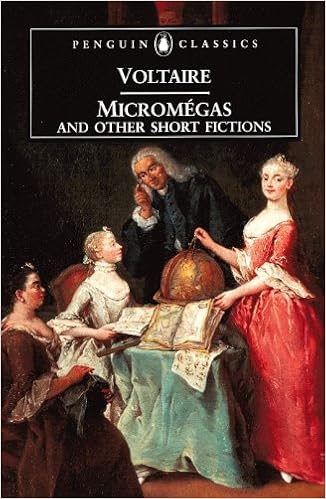The Philosophy of Periyar E. V. Ramaswamy centred around
atheism. His atheist arguments were predominantly against Hindu scriptures like
Vedas, Manu Samhita, Ramayana, Mahabharata etc. His frank and unapologetic words are often
shocking if not alarming. Before the end of this article about Periyar you’ll
either detest him as an iconoclast or admire him as a rationalist. Only fierce
honesty can have that kind of effect on readers.
Thanthai Periyar E. V. Ramasami considered himself a
rationalist. He was against anything that was not in tune with reason. He was
not loyal to any particular political party. Instead, he extended his support
to whoever he thought had done well to the society. He would not support a
party just because it was in power. He respected M. K. Gandhi with all his
heart, but when the latter refused to take a strong stand against
Untouchability, Periyar was somewhat disillusioned.
Gandhiji said: “If the
Untouchables (lowest caste people) are prevented from drawing water from a
well, let separate well be dug for them; if they are not allowed into the
temple, let separate temples be built for them.” I said then: “If no amends are
made for the abject humiliation that they cannot draw water from a well, let
them there die of thirst. That they must be freed from this degradation is more
important than the provision of water to save their lives.”
Periyar aimed his struggle against the Brahmins whom he
thought were responsible for caste system. The scriptures, he believed, were
some of the things that the Brahmins used to justify their behaviour. He
considered Christianity and Islam were in a better position than Hinduism in
the matter of social justice. They offered equality and self respect to
humanity that caste-ridden Hindu society failed to provide.
He was introduced to Hinduism at quite a young age when
Tamil Vaishnav Gurus came to his
house and talked about Mythologies. He started placing questions that
embarrassed the gurus as well as his family members. His next encounter with
religion took place in Kaasi, a noted town of Hindu pilgrimage on the banks of
Ganges. There he could not get free meals from the inns that were exclusively for
the Brahmins. He starved severely for few days till he couldn’t suffer the
pangs of hunger anymore. Wearing a thread on his bare chest, he tried to enter
the choultry disguised as a Brahmin. But his moustache betrayed him. He was
thrown out. During the feast inside the choultry the leftover food were thrown
at the street. Periyar, compelled by the unbearable
burning of starvation had to compete
with the street dogs in eating the remnants of the left over foods in the
leaves. Though the choultry was occupied by Brahmins, it had been built by a
wealthy philanthropist of Dravidian Race from Tamil Nadu. The hypocrisy
agitated him.
Though Kaasi
(Varanasi) has been acclaimed as the most “sacred town” by the Brahmins, the
worst ugly scenes of immoral activities, prostitution, cheating, looting,
begging crowds for alms, floating dead bodies on the River Ganges turned
Periyar to abhor that so-called holy-town.
Back in school, he was asked not to eat or drink in any
low-caste house. He had to drink water from the house of a teacher who was a
strict vegetarian and belonged to Odhuvar
caste. The girl who came with the water used to place the brass tumbler on the
ground and poured water into it. Periyar had to drink it without sipping. After
drinking he had to place the tumbler upside down. Then the girl would pour
water on the vessel before taking it into the house – to purify the vessel
touched by a low-caste.
Compared to this the
social position of Brahmins was fairly advantageous. One could go to heaven by
prostrating before the Brahmins, or, by drinking the water after washing their
feet. It was only the Sudras who were not wanted and there were innumerable
ways to insinuate that – to remind the Sudras that they should never forget
their place in the society.
They (The Brahmins)
tuck the sacred thread they wear in the ear as they pass urine or motion. They
say that they escape pollution by this. They will wear the thread only after a
bath or when they deem they are pure and clean. Similarly they tuck the thread
in the ear when they talk to the Sudras.
Had God created the human beings, why would he make them unequal?
Why would Brahmins get special treatment, whereas the low-caste Sudras would be
deemed impure? All these questions disturbed Periyar. He took to extensive
reading of sacred books to find answer. All he could find were incongruities.
They seemed so obvious that it was only surprising how they might stand a
rationalist’s arguments. That was the reason, Periyar concluded, to prohibit
non-Brahmins from learning Sanskrit. All those texts were in Sanskrit. If
people started reading them, that would expose the Brahmins.
According to the Hindu sacred text, during the marriage of Shiva and Parvathi, Brahma had a good look at the Parvathi’s thighs. This made him extremely lustful. He ejaculated
repeatedly, first into the vessel near the sacred fire, then on plants and
trees, on the ashes of a graveyard, on a heap of bones – and it seemed by doing
that he impregnated almost everything around him. When some of Brahma’s semen
dropped on the ground, a bird came and consumed it. It immediately became
pregnant and gave birth to Sakuni.
When a frog swallowed it, it gave birth to Mandothari.
Finally when it fell on a lotus flower, the lotus became pregnant and gave
birth to Padma.
When Brahma saw
the beauty of his daughter Padma he
was once again filled with lust. When Padma refused, he chased her. He began to
quote the Vedas to make her realize there
was nothing wrong in enjoying with anyone, anytime, anywhere for the sake of
giving birth to a child. He somehow managed to convince her daughter to
have sex with him.
Brahma developed
multiple heads to stare at the erotic dance of Thilothama. In these sexual escapades he spared no one, not even a
female bear. A human being with bear head called Jambu Vandan was thus born. He even wooed Urvasi, a prostitute. Now since Brahmins are born from the face of
Brahma, they were considered the highest caste and the primary beneficiary of
the wealth and property of other castes and communities. It is further ordained
by The Veda itself that it was a King’s moral obligation to punish those who
defy the Vedas and their rituals. What tyranny!
Probably, what served best in safeguarding interests of the
upper-caste, was Manu Samhita. It
gave Brahmins a place close to deities. They were even allowed to eat flesh of
any living being – stags, goats, birds, porcupine, pig, bison, rabbit, and
tortoise. They were allotted all that was the best – cow’s milk, curd, paddy,
rice, fruits. A Sudra, on the contrary should be away on the day of the
ceremonies. The word Dasan, meaning
slave, should be affixed to all the Sudra names. Anyone who gave the ceremonial
offerings to a Sudra, went to hell. All the upper-caste people who failed to
worship Brahmins would become Sudra. In any congregation, food should be
offered first to all the Brahmins present. Left over, if any, should be given
to others. According to Manu, it was the King’s responsibility to see that
Sudras served Brahmins, who had every right to extract work from Sudras with or
without payment. Brahma created Sudras to work for the Brahmins. According to
Manu,
Any eatable article
becomes polluted and unfit for consumption when:1.
A pig
dashes against
2.
Hens
and cock fly over
3.
When a
dog looks at
4.
When a
Sudra touches
The Sudras were not entitled to property. There should be no
hesitation, said Manu, to plunder the wealth of Sudra. Severe punishments were
to be meted out to a Sudra who dared to speak against a Brahmin or so much as
utter a Brahmin name through his lips.
If a Sudra talks ill
of a Brahmin his tongue should be cut off. Chap.8.S.270
If a Sudra pronounces
the name of a Brahmin or talks of his caste or accuses him, an iron rod ten
inches long should be heated red-hot and thrust into the mouth of the Sudra.
Chap.8.S.271
If the Sudra dictates the Brahmin to do a particular thing, boiled
oil should be poured into the mouth and ears of the Sudra. Chap.8.S.272
If the Sudra hits at
the Brahmin’s hair, beard, legs, neck, penis, his hands must be cut off.
Chap.8.S.283
If the Sudra sits in a
seat along with a Brahmin, his hips should be scorched or he should be driven
away from the town. Chap.8.S.281
Manu exempted Brahmins from all forms of punishment. Even if
a Brahmin did something bad, he should be worshipped, because he was superior
to all.
Manu’s sermons on women were more shocking. They were not
only patriarchal but also perverse. Giving pleasure to men and producing child
were, according to Manu the sole purpose of a woman. A woman, he said, should
obey the father as an infant, obey the husband in her youth and obey the
children when widowed. A woman can never exercise her will independently. (Chap
5, S 148). Manu summed up women with the words,
Bed, seat, beauty,
pregnancy, anger, lie, betrayal etc were created only for the sake of woman.
To the family that is not having a child, the wise Manu
spoke once again.
If a family suffers on
account of not having a child the woman could obtain the consent of the
father-in-law and the husband and have intercourse with the brothers-in-law and
the close relatives of the husband and give birth to children(Chap 9, S 59).
According to Manu, it is no sin to kill a woman or a
non-Brahmin.
When Periyar E. V. Ramaswamy tried to trace the root of
Untouchability, no matter what path he chose, it led him to religion. The
mythological figure that we idolized, the sacred texts that we blindly followed
only drove us deeper into regression and servitude. The edicts made by Brahmins
were unfairly imposed upon the rest of the society in the name of tradition and
religion. Even the study of Ramayana did nothing but bolstered this view. The
fictional characters whom chose to be our role models seemed hardly worthy.
Rama according to the
Valmiki Ramayana, was not an upright man. He had a hand in many acts of
perfidy.
Rama, said Periyar was in truth a Sudra-slayer. He did it
mainly to please the Brahmins. Rama conspired with Sugriv, Vali’s unfaithful
brother and struck a deal with him. He treacherously killed Vali. No matter
whom he killed, the Brahmins sang his eulogies. As if they justified, on his
behalf, all the killings. It was a great cover up. Unlike projected by many
interpreters, Ravana was not driven crazy by Sita’s beauty. He abducted her to
avenge his sister Soorpanaka whom Lakshman had molested brutally. Ravana,
according to Valmiki was a learned man, a scholar. His subjects were pleased
with him. But even when Rama killed him, Brahmins took every pain to establish
the killing was for good. Perhaps his only fault was he was a Dravidian king.
According to the text Ravana was cursed. If he touched any
woman without her consent, his whole body would be ablaze. He brought Sita to
Lanka, and yet survived. It is more likely that Sita didn’t protest much or,
perhaps she accompanied Ravana willingly. Also the chronology of Valmiki’s
Ramayana only suggested that it was not Rama whose child Sita was carrying. When
Rama found out she was pregnant, he was furious. He asked if during her stay in
Lanka she had ever committed adultery. Sita evaded the question. That Rama was
very popular among Brahmins, didn’t come as a surprise. He followed Manu’s Code
in almost everything he did. His whole life was devoted in pleasing the priests
who in turn suppressed everything that pointed to his doubtful character.
Periyar pointed all these contradictions that made him
extremely unpopular among not only the Brahmins but also those orthodox Hindus
who blindly followed the faith.
... he who boldly
tells the unadulterated truths will become the arch enemy of many people. By
this it is not meant that all people should be liars. It only indicates that
the real truth and philosophy are prevalent in the society in a different form
by nature and name. On account of this many truths are found to be
unconvincing.
Instead of Ramayana and Mahabharata that he considered to be
Aryan literature, he encouraged people to read Thirukural by Thiruvalluvar. “You could find only virtue, wealth and love
in Kural,” he said. However, he rejected its divine utterances or inspired
Apocalypse. He wanted it to be read solely for moral guidance.
Thanthai Periyar E. V. Ramasami believed that a god who
created only inequality among men, was good for nothing. A code that taught us
to oppress women can’t be called a moral code. As long as we treat them as
fantastic stories, works of fiction, there was no problem in reading them. But
it would be a great blunder to project
such stories as true. When people believed them blindly, Periyar observed,
that would only result in under development of the brain. God is a myth, he said, God
is a big hoax.
It is said some gods
are able to play with mountains as mere play balls. Many fantastic qualities
are attributed to our gods. But have we performed any miracle in any way to the
outside world? Nothing so far! Even the matchstick would not have come to us,
if Europeans had not come here (India).
Periyar however, wrongly believed that the West was somewhat
free from the influence of religion. This was only partially true. Even today
there are people of a certain Christian sect who refuse medical care as they
believe it intervenes with God’s plan. Also Periyar had the misconception that
Islam was free from casteism. Today Islam has over 300 distinct sects. Some of
them are in constant strife with each other. Because of this misconception
Periyar often encouraged conversion of low-caste Hindus to other religions. However
his observations regarding religion in general were very accurate and relevant
even today. Like B. R. Ambedkar, Periyar too had great respect for Buddha. He
considered Buddhism akin to rationalism. Buddha condemned all forms of idolatry
and wanted people to search for the truth themselves. However, I wonder what
they would think had they learned about the Rohingya crisis.
He despised astrologers. He believed they were the foremost exploiters of the people’s
greed and superstition. Their business continues to flourish so long as people are not rational free
thinkers.
In the name of the
malevolent planets, it will be seen that the astrologer, the magician and the
temple priest exploit the people and relieve them of their hard-earned income.
The real reasons behind the popularity of astrology are that
first, men are afraid to face the world and secondly, they are extremely
greedy. Today some believe astrology to be a speculative science. To Periyar it
was not even that. It was a mere speculation, a fraud. There is no shortcut for
success. Good results come with hard work and sincerity. If the astrologers
could control luck, wouldn’t they be millionaires themselves?
 |
| View Source |
There were many things Thanthai Periyar E. V. Ramasamy
believed like there were things he didn’t. He believed in equality, social justice.
He believed in Russia and its communism. He was a fierce critic of Brahmanism.
He had publicly burned
Manu Smriti
and
Ramayana and attracted widespread
protest. He took the cause of Untouchables at a time when most others were
afraid to talk about it. In Vaikom, the low caste people were not allowed to
walk in the streets around temple. When local Congress leaders started an
agitation, Periyar joined them. For this he was sentenced twice to undergo
imprisonment for six months for each term.
In 1925 when the Congress party
showed apathy in taking up his cause, Periyar left the party. Before he joined
Satyagraha he held 29 important posts in various places. He gave up all that. Though
he was a confirmed atheism, he also emphasised that God and religion were
sometimes more helpful than laws, to prevent criminality. All men should have
mutual love – he said – to receive help from others. He mentioned discipline,
love, sympathy, honesty and indebtedness as essential virtues. He was opposed
to believing anything – even his own preaching - blindly. He encouraged
critical thinking. Rationalism, according to Periyar E. V. Ramasamy, is already
in our possession. It’s only a pity that so few of us actually put it to use.





























